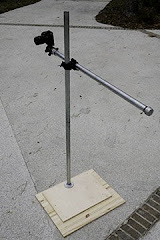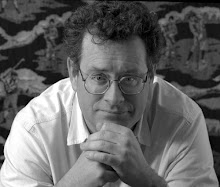My first digital SLR was the Nikon 100D, which I purchased in 2003 and used before switching over to the Canon line of digital SLRs. The 100D went to my father and he used it until his eyesight failed due to macular degeneration. When the camera came back to me, I decided to have it modified for IR after listening to a lecture on IR at Photoshop World in Orlando earlier this year. The instructor was impressed by the conversion service of LifePixel Infrared Conversion in Washington state so I started my investigation there.
Conversion is pricey, $350 for my Nikon, but after speaking to several photographers who had had the "operation" I decided to proceed using LifePixel. The process is simple using the LifePixel website: You pay upfront and LifePixel sends detailed instructions on how to send the camera. The conversion is specific to a lens in that focus is adjusted during the process. Remember the little infrared offset on old lenses? Since IR light focuses at a different point than visible light, this adjustment is critical in order for auto focus to work properly. For the Nikon, they calibrate focus to a 18-70DX lens. If you want to calibrate focus to a lens other than the 18-70, they will be happy to do it for you (for a fee, of course). By the way, Canon and Nikon point and shoot cameras are also supported for conversion at $300. I'm told some folks have new cameras shipped directly from a retailer like B&H Photo in NYC to LifePixel.
It takes about a week to 10 days to do the conversion, but if you are using ground shipping from the East Coast figure another 2 weeks in transit. Quick turn-around service and shipping are available, but again, it will cost you. I actually forgot to place the email conversion form in the shipping carton with my camera, which caused me some momentary panic, but it all got straightened out over the phone. Service is really good with this company and I was very pleased with the entire operation.
When your converted camera returns, take the time to read the LifePixel tutorials and watch the videos available on the site if you haven't done so already. These tutorials cover the basics, but there is a lot more information out there that you may want to absorb. For me, the most important procedure is to set up your newly converted with a custom white balance using green grass as the balance source. Also, shoot in RAW mode if at all possible. The flexibility you will achieve in your favorite RAW converter is amazing, whether sticking with color infrared, or converting to black & white. The whole process is about experimentation. The first thing I wanted to do was to get rid of the magenta cast that naturally occurs in every shot with a newly converted camera. If you are not familiar with performing a custom white balance, get out your camera's manual.
Subscribe to:
Post Comments (Atom)











No comments:
Post a Comment